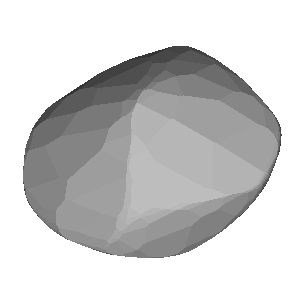2010-12-18 / TYC 1320-01177-1 / (683) Lanzia
| # | OBS | Observer | Occ | Meth. | Instr. | CC | TSRC | UT1 | UT2 | UT3 | UT4 | UT2E | UT3E | Dur. | Chrd |
|---|---|---|---|---|---|---|---|---|---|---|---|---|---|---|---|
| 1 | show | P. Baruffetti et al | O+ | VID | M200 | IT | RAD | 22:42:30 | 22:44:05.3 | 22:44:13.5 | 22:46:00 | 0.4 | 0.5 | 8.20 | 124.6 |
| 2 | show | Giancarlo Bonatti | O+ | CCD | M300 | IT | RAD | 22:43:41 | 22:44:03.8 | 22:44:12.2 | 22:44:41 | 0.5 | 0.5 | 8.40 | 127.7 |
| 3 | show | Roberto Di Luca | O+ | VID | M250 | IT | GPS++ | 22:38:00 | 22:43:59.85 | 22:44:07.83 | 22:47:00 | 0.16 | 0.16 | 7.98 | 121.3 |
| 4 | show | Carlo Gualdoni | O- | CCD | M250 | IT | 22:40:46 | 22:46:46 |
4 observations found in db: euraster
Available (probably) matching predictions (click on the link to switch):| JPL#103 : 0fc1f3a3-abf5-497d-a7f2-37ea95a95a87 [db: observed] |
| JPL#103 : 7aaa76ef-251b-49ba-8e2a-3dba8b1c83e5 [db: observed] |
Using prediction 0fc1f3a3-abf5-497d-a7f2-37ea95a95a87 for map and profile fit
| Ellipse and circular profile fits to the timings (chords) |
|---|
|
|
Auto-Fit Result: Ellipse profile fit was not successful. Trying circular fit. Circular profile fit was not successful ... You can enter space separated chord numbers (example: 11 4 8) or a method like VIS to ignore all visual timings, or a time source like RAD and NTP (but not GPS). If the plot disappears, then there are less than 2 chords left (too much ignored, go back with browser). Check SiMDA for size and mass data. Check Johnston Archive for satellites. |
Sky projection (artificial light) for occ. time: 2010-12-18, 22:44 UT (JD = 2455549.447)
| DAMIT | Q | P (h) | λ, β | JD0 | JD-JD0 | φ0 | Version | Modified | Vol-equiv D | Cmnt |
|---|---|---|---|---|---|---|---|---|---|---|
| # 238 | None | 8.629 | 245°, 42° | 2.443951e6 | 11598.4 | 0.0° | None | 2010-04-15 | not scaled | 2010-04-01 |

Image size: 300px. Transparent image background for copy & paste
| Map with groundtrack and observer stations |
|---|
| Event Details |
|---|
Occultation UUID [and DB] : 0fc1f3a3-abf5-497d-a7f2-37ea95a95a87 [observed] Occultation Date + Time : 2010-12-18 at 22:44:23 UT +/- 0.02 min [1] Object Designation : (683) Lanzia Orbit Class : MBA Star Designation : GDR3 3398745713114495744 Star Coordinates (ICRF) : RA = 05 55 21.5497, DE = +19 19 02.591 [2] Star Magnitudes : G = 10.55 mag, RP = 10.14 mag, BP = 10.64 mag Object Magnitude : V = 13.21 mag Estimated Magnitude Drop : 2.8 mag Estimated Max. Duration : 5.4 sec Object Mean Diameter : 82 km (src: astorb) Speed of the shadow : 15.2 km/s Elongation to Moon & Sun : 32° (sunlit = 93%), Sun = 175° Cross-track uncertainty : 3.0 mas = 4 km = 0.06 path-width (1-sig) RUWE and duplicate source : 5.91 mas, dup.src = 0 (0:false, 1:true) Ephemeris Reference : JPL#103 [1] time t0 of closest geocentric approach c/a, [2] including proper motion until t0 |
| More Data and Informations |
|---|
(If error 404: link not valid which means no data available)
| Aladin Sky Atlas |
|---|
| Aladin Lite direct link (has Gaia overlay) |